11 Best Cat Foods 2022
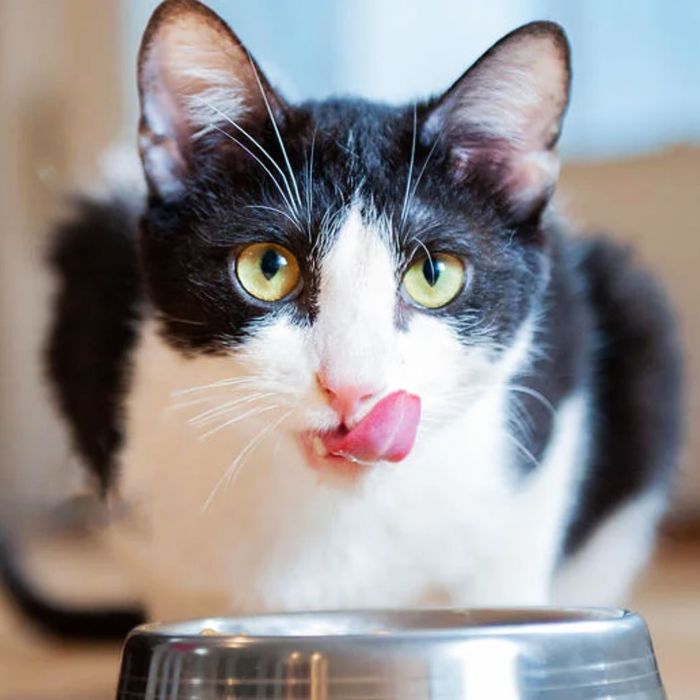
Photo: Purina
As the owner of a 10-year-old cat, I’m constantly thinking about how to keep her happy and healthy. Choosing the right food is a major part of that equation, and wading through a sea of marketing claims can make it a surprisingly difficult task. If you’re like me — overwhelmed by the options out there from grain-free and raw to human-grade and freeze-dried — veterinarian Brennen McKenzie, who blogs about science-based pet care at the SkeptVet, may help put your mind at ease: “The reality is that there is no one ‘right’ food, and most cats can thrive on a broad variety of available diets,” he says. “Compared to the haphazard diet of whatever prey and scavenged dead things that feral cats can find, our pets have an excellent source of nutrition in conventional commercial cat foods.”
But even with that comforting guidance, there are still hundreds of cat food formulas to choose from, so I asked McKenzie and 11 other experts to guide me through the different options and explain why a cat owner might choose one brand or type of food over another. As explained in the criteria below, some of the determining factors will depend on your cat’s specific needs (often determined by their age), while others are more subjective (as cat owners know, picky felines often have their own unexplainable preferences).
Read on for the criteria we considered, or click on any of the links below to jump straight to our top cat food picks.
Best overall| Best meat-in-gravy | Best (less expensive) meat-in-gravy | Best shredded | Best for sensitive stomachs | Best for purebred cats | Best human-grade | Best raw | Best for senior cats | Best for kittens | Best (less expensive) for kittens
Life stage: “The most important part when you’re buying food for your pet is looking for the nutritional-adequacy statement and making sure it’s for the appropriate life stage for your pet,” says Martha G. Cline, a certified veterinary nutritionist at Red Bank Veterinary Hospital in New Jersey. All pet food should have a nutritional-adequacy statement from the Association of American Feed Control Officials noting whether it meets the standards for growth (good for kittens), adult maintenance (for maintaining a healthy weight), or all life stages (any age).
Nutritional breakdown: Unlike with human food, you generally won’t find a nutrition label on your cat’s food breaking down the specific quantities of carbohydrates, fat, and protein it contains. For the most part, McKenzie says that’s okay since all food that meets AAFCO standards will provide a sufficient amount of all macronutrients. “There is a range within which cats can thrive, and individual cats all have slightly different needs,” he says, adding that “nearly all commercial diets fall within these ranges.”
However, some vets are more specific in their recommendations. Jennifer Berg, founder of Tribeca Veterinary Wellness, says “more protein than fat, and then very little of any kind of carbohydrate is what we feel is probably ideal.” Jennifer Coates, a veterinary expert at the online pet-supplies retailer Chewy, agrees that cats need more protein than many other species and stresses that the protein “should be sourced from animals.” And veterinarian Lisa Pierson has compiled a thorough, publicly available Google spreadsheet of the nutrient profile for hundreds of cat-food flavors if you’d like to see an individual formulas’ nutritional breakdown. But it’s best to ask your vet if they recommend a specific composition for your cat’s needs.
You may also notice that some cat foods are labeled “grain free,” but vets are wary of this marketing term as it doesn’t tell you much about food’s actual nutrition. “Grain-free foods can be nutritionally excellent or terrible, and the presence or absence of grains themselves says nothing about the health impact of the diet,” says McKenzie. “Anxieties about grains, and carbohydrates generally, in cat foods are not based on real science and should not be the basis for selection of a cat food.”
Wet food or dry food: The two main forms of cat food are wet and dry. Before choosing one form over the other, ask your vet what they recommend for your cat’s particular needs. Because cats naturally drink little water, some vets prefer wet food since its higher moisture content keeps cats hydrated, which may help prevent kidney disease. Other vets disagree, arguing that dry food encourages cats to drink more water and that there’s little scientific evidence to promote the link between wet food and healthier kidneys. Wet food is also lower in calories, so some vets may recommend it if your cat is struggling to maintain a healthy weight. Dry food, or kibble, has the advantage of staying fresh longer, which may make it a good option if your cat likes to graze at her meals over the course of the day. Some dry food is actually freeze-dried, a process manufacturers use to keep ingredients fresh (especially with raw food) without risking bacterial contamination. Within the wet-food category, you’ll find pâtés (loaf-style food with a homogenous texture), shredded meat formulas, and meat-in-gravies (a liquid-based food with chunks of meat). Picky cats tend to have a favorite style of food, so you may have to try a few different types.
Approximate cost per ounce: The cost of cat food varies depending on the brand and formula you choose, and more expensive food isn’t necessarily healthier. Since you’ll be buying a lot of food over the course of your cat’s lifetime, we’ve listed the approximate cost per ounce for each food based on the manufacturer’s suggested retail price (which may be different than the retailer price as those can change because of different promotions). As for how much food to feed, cats generally require 200 to 250 calories per day, but this number varies based on their size, activity level, and whether they need to lose or gain weight. (Calorie counts per ounce of food also vary, so you’ll need to check the feeding instructions on the packaging.) Megan Shepherd, a veterinary nutritionist at the Virginia-Maryland College of Veterinary Medicine at Virginia Tech, advises checking with your veterinarian for more specific guidance and consulting this body-condition score chart to see if your cat is under- or overweight.
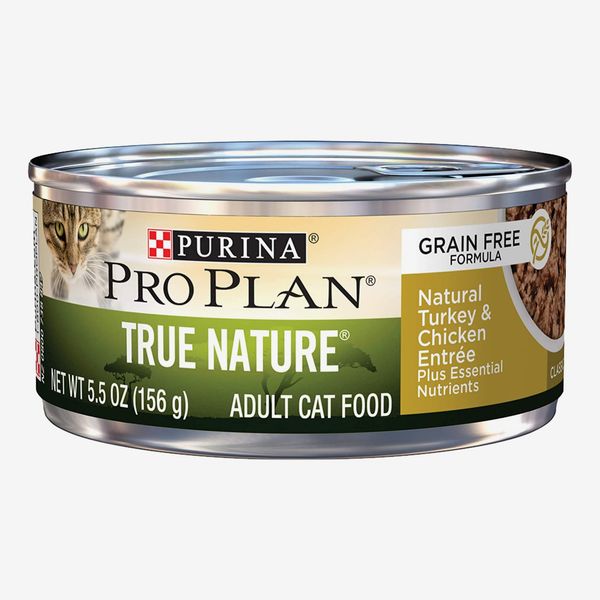
Adult | High protein, moderate fat, very low carb | Wet, pâté | Approx. $0.35 per ounce
As explained above, there’s really no one “best” cat food, but according to the veterinarians I spoke with, this Purina Pro Plan formula should check all the nutritional boxes for most adult cats without any special needs. Because Purina employs full-time veterinary nutritionists and invests heavily in research and development, it’s a favorite brand of veterinarians like Cori Blair of Feline Health and Valerie Parker, an associate professor of small-animal internal medicine and nutrition at the Ohio State University’s College of Veterinary Medicine. Chyrle Bonk, a veterinarian with the pet-health website Doggie Designer, likes Purina Pro Plan because the food is high-quality while still being affordable and easy to find. “Purina uses real, whole meat as their first ingredient and provides high protein, moderate fat, and plenty of healthy fiber,” she says.
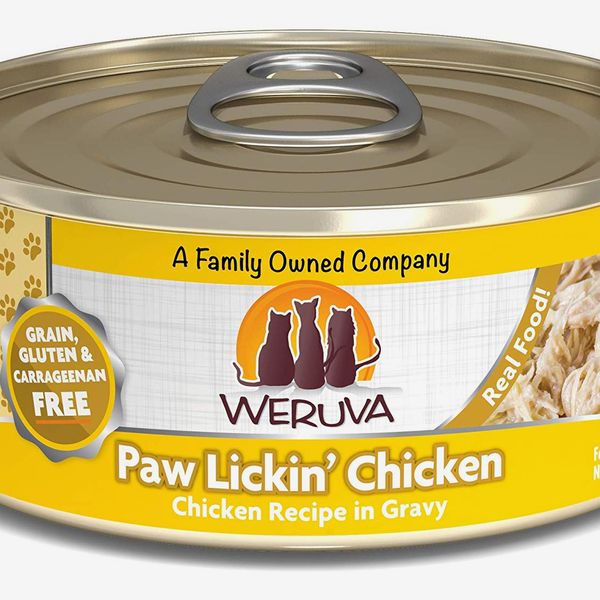
Adult | Very high protein, low fat, very low carb | Wet, meat in gravy | Approx. $0.38 per ounce
If your cat prefers meat-in-gravy formulas, Berg says this chicken-in-gravy flavor from Weruva is a good option because of its high-protein and low-carbohydrate content. The brand is also recommended by pet-nutrition consultant Susan Lauten. It is grain-free, if that’s something you’re looking for, but as stated above, “grain free” is more of a marketing term than a reliable indicator of healthiness.
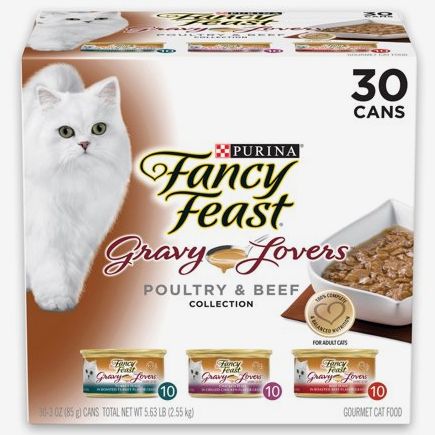
Adult | High protein, moderate fat, moderate carb | Wet, meat in gravy | Approx. $0.25 per ounce
There’s nothing wrong with saving money on cat food as long as you’re picking a food that’s nutritionally sound. “A lot of people will say Fancy Feast is kind of the McDonald’s for cats, but it’s actually not the case,” says Berg. “Plenty of the Fancy Feast are actually quite high in protein and very low in carbohydrates.” This variety pack of protein-rich, meat-in-gravy flavors checks all her boxes and would be a good option for cats who like to mix up their meals.
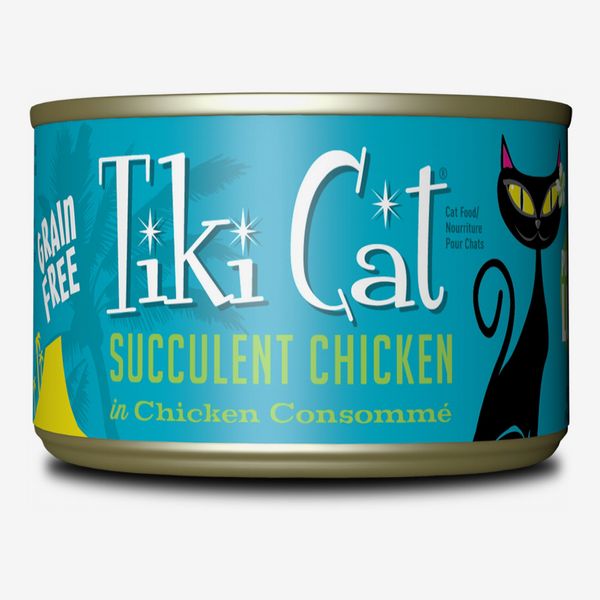
Adult | Very high protein, low fat, very low carb | Wet, shredded | Approx. $0.68 per ounce
If you browse Pierson’s chart, you’ll see Tiki Cat offers many options that are high in protein and low in carbs, and Lauten likes the brand’s wet and dry foods. Lots of Tiki Cat food is fish-flavored, which is extremely attractive to cats because of its salty taste, but some vets, including Berg, actually discourage feeding cats fish because fish-flavored cat food has been linked to hyperthyroidism. Your vet can help you decide whether or not you should limit fish in your cat’s diet. This variety features shredded chicken and should appeal to cats who like their food a little chunkier.
[Editor’s note: This cat food is sold out almost everywhere right now, but you can get a 10 oz can at Petco for $4.]
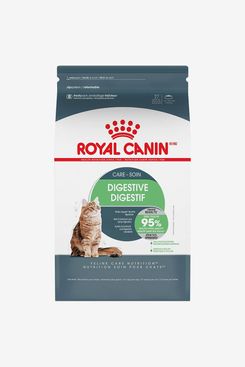
Adult | Moderate protein, fat, and carbs | Dry, kibble | Approx. $0.35 per ounce
For cats with digestive issues or sensitive stomachs, veterinarian Jamie Freyer recommends this specially formulated food from Royal Canin. Such ingredients as easily digestible proteins, prebiotics, and fiber-rich psyllium-seed husks promote intestinal health and regular bowel function. Lots of vets mentioned the brand because of the science that goes into its food and the vigorous testing it conducts.
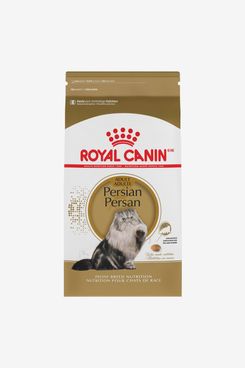
Adult | Moderate protein, fat, and carbs | Dry, kibble | Approx. $0.30 per ounce
If you have a purebred cat, Freyer recommends looking at Royal Canin’s breed-specific foods that are designed for the unique needs of cats like Persians, Maine coons, and Bengals. For example, in the brand’s dry food for Persian cats, the pieces of kibble are almond-shaped, which are easier for these cats to nibble with their shortened jaws.
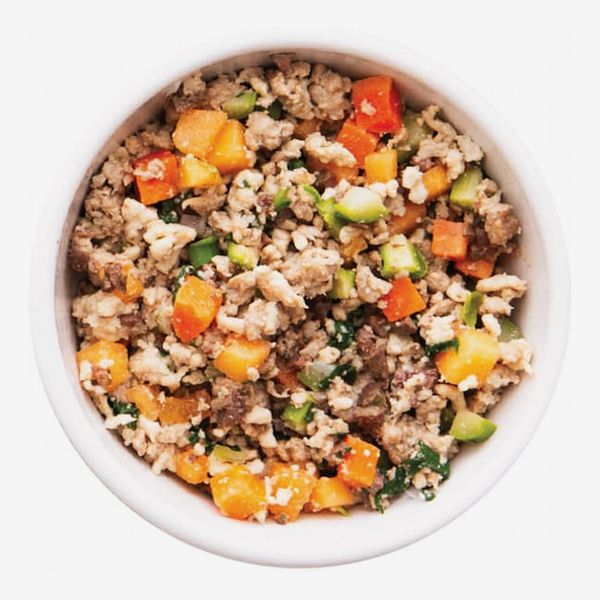
Adult | Very high protein, low fat, low carb | Wet, shredded | Price upon request
Like “grain free,” some vets say “human-grade” is more of a buzzy phrase than a statement of quality. (As McKenzie points out, “All the ingredients in potato chips and corn dogs are, by definition, ‘human grade.’”) But if you’re looking to switch up your cat’s food, this direct-to-consumer brand offers high-quality options that are nutritionally appropriate for cats. Lauten likes that Nom Nom’s food is high in moisture and meets AAFCO formulation standards. It is formulated by a board-certified veterinary nutritionist. It’s certainly a good option — I’ve given my cat a sample of Nom Nom, and she was a big fan — but vets like McKenzie and Liz Bales, who created the expert-recommended Doc & Phoebe’s Cat Co. hunting feeder, stress that small brands aren’t necessarily any better than the big names you’re used to seeing on the shelves of pet stores. “In many cases, the testing of the ingredients, or the end product, is not as thorough. You might see one of the big brand names of cat food have a recall, but they have a recall because they got tested. You can’t have a recall for a product you didn’t test,” Bales says. Prices of Nom Nom cat foods vary as the company offers customized portion sizes based on your cat’s age and weight. (Smalls is a similar option that vets like, too.)
[Editor’s note: Due to supply chain issues, Nom Nom is discontinuing its Chicken Cuisine cat food starting March 28. You can sign up to be notified should Nom Nom be able to offer the cat food again in the future.]
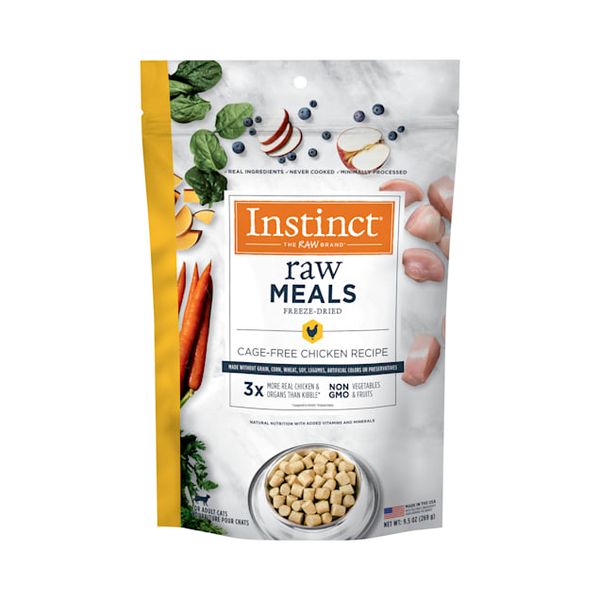
Adult | High protein, moderate fat, low carb | Dry, freeze-dried | Approx. $2.42 per ounce
While a few vets mentioned the benefits of raw food for cats, most cautioned against preparing it on your own because of the risk of contamination. “The less processed a food is, the more nutritious it is, but very few people want to deal with the possible bacterial dangers that feeding raw food brings,” says Bonk. Instead of grinding up raw meat in your kitchen, she recommends this freeze-dried raw food from Instinct that mimics the nutrient-rich food your cat would eat in the wild but comes in a form that’s safe to feed at home. “This makes a very nutritious, less processed version of cat food that cats seem to do well on,” she says.
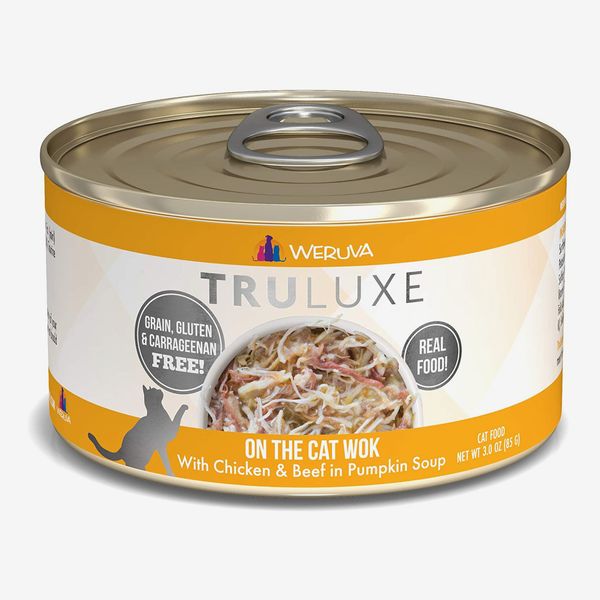
Adult and senior | Moderate protein and fat, low carb | Wet, meat in gravy | Approx. $0.49 per ounce
If you look at Pierson’s chart, you’ll see that the fourth column tracks how much phosphorus is in each food listed. Phosphorus might not be the first thing you look for when shopping for your own food, but this mineral is a very important factor in cat health. While phosphorus is essential for bone development in young cats, as cats age, Berg says too much of it can cause or worsen kidney disease, a common problem among older cats. That’s why AAFCO standards have higher minimums for phosphorus in kitten foods than in adult formulas.
AAFCO doesn’t have a maximum phosphorus level, but Berg recommends trying to stay under 200 milligrams per 100 calories if your cat is 10 years old or older. Senior cats still require lots of protein in their diet, though, so Berg says to make sure you aren’t sacrificing protein in a lower-phosphorus formula: “Phosphorus tends to go up as the protein goes up,” she says. “But there are some proteins that are higher in phosphorus than others.” This nutritionally balanced Weruva food contains only 163 milligrams of phosphorus per 100 calories.
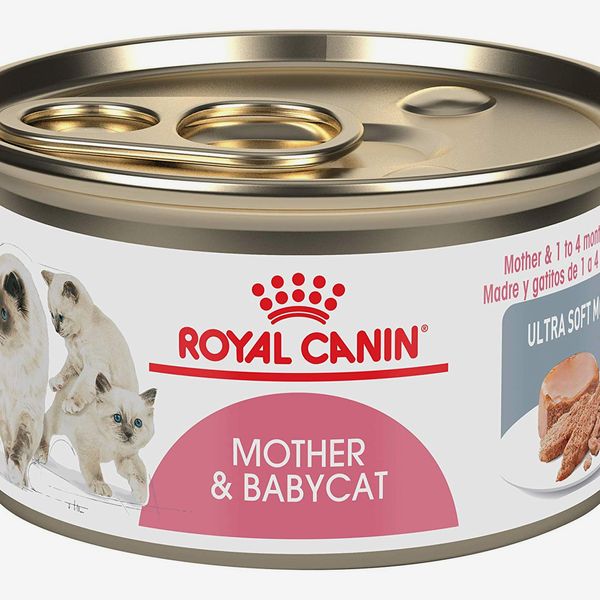
Kitten | High protein, moderate fat, low carb | Wet, pâté | Approx. $0.45 per ounce
If you’re buying food for a kitten, make sure to look for the AAFCO nutritional-adequacy statement for growth. “Because kittens are growing and developing, they require more calories than adult cats do on a per-pound basis,” says Coates. “Kitten foods are generally higher in fat than foods designed for adults to provide them with these extra calories.” Blair and Parker are fans of Royal Canin, and the brand’s just-for-kittens food is packed with protein and fortified with all the vitamins and minerals the littlest kitties need to thrive. It’s the same food that Hannah Shaw (better known as the Kitten Lady on Instagram) feeds her rescue kittens. “The pâté is the perfect soft texture for weaning kittens and provides them with high-quality nutrition that helps them thrive,” she says.
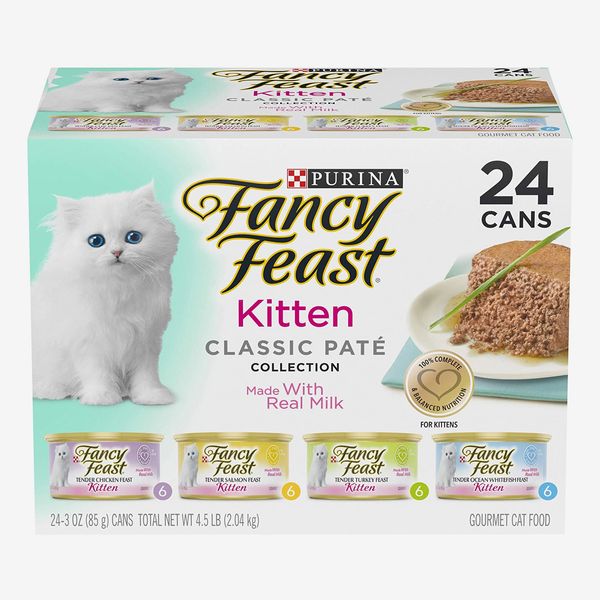
Kitten | Moderate protein, moderate fat, low carb | Wet, pâté | $0.25 per ounce
Fancy Feast (our top pick for less expensive meat-in-gravy food for adult cats) also makes kitten food that meets AAFCO requirements for growing kittens. This variety pack includes four different flavors, so there’ll likely be something for every member of a new litter to enjoy
• Liz Bales, veterinarian
• Jennifer Berg, veterinarian and founder of Tribeca Veterinary Wellness
• Cori Blair, veterinarian with Feline Health
• Chyrle Bonk, veterinarian with Doggie Designer
• Martha G. Cline, veterinarian and certified veterinary nutritionist at Red Bank Veterinary Hospital
• Jennifer Coates, veterinary expert at Chewy
• Jamie Freyer, veterinarian
• Susan Lauten, pet nutrition consultant
• Brennen McKenzie, veterinarian and blogger at the SkeptVet
• Valerie Parker, veterinarian and associate professor of small-animal internal medicine and nutrition at the Ohio State University’s College of Veterinary Medicine
• Hannah Shaw (the Kitten Lady), cat rescuer
• Megan Shepherd, veterinarian and veterinary nutritionist at the Virginia Maryland College of Veterinary Medicine at Virginia Tech
The Strategist is designed to surface the most useful, expert recommendations for things to buy across the vast e-commerce landscape. Some of our latest conquests include the best acne treatments, rolling luggage, pillows for side sleepers, natural anxiety remedies, and bath towels. We update links when possible, but note that deals can expire and all prices are subject to change.








